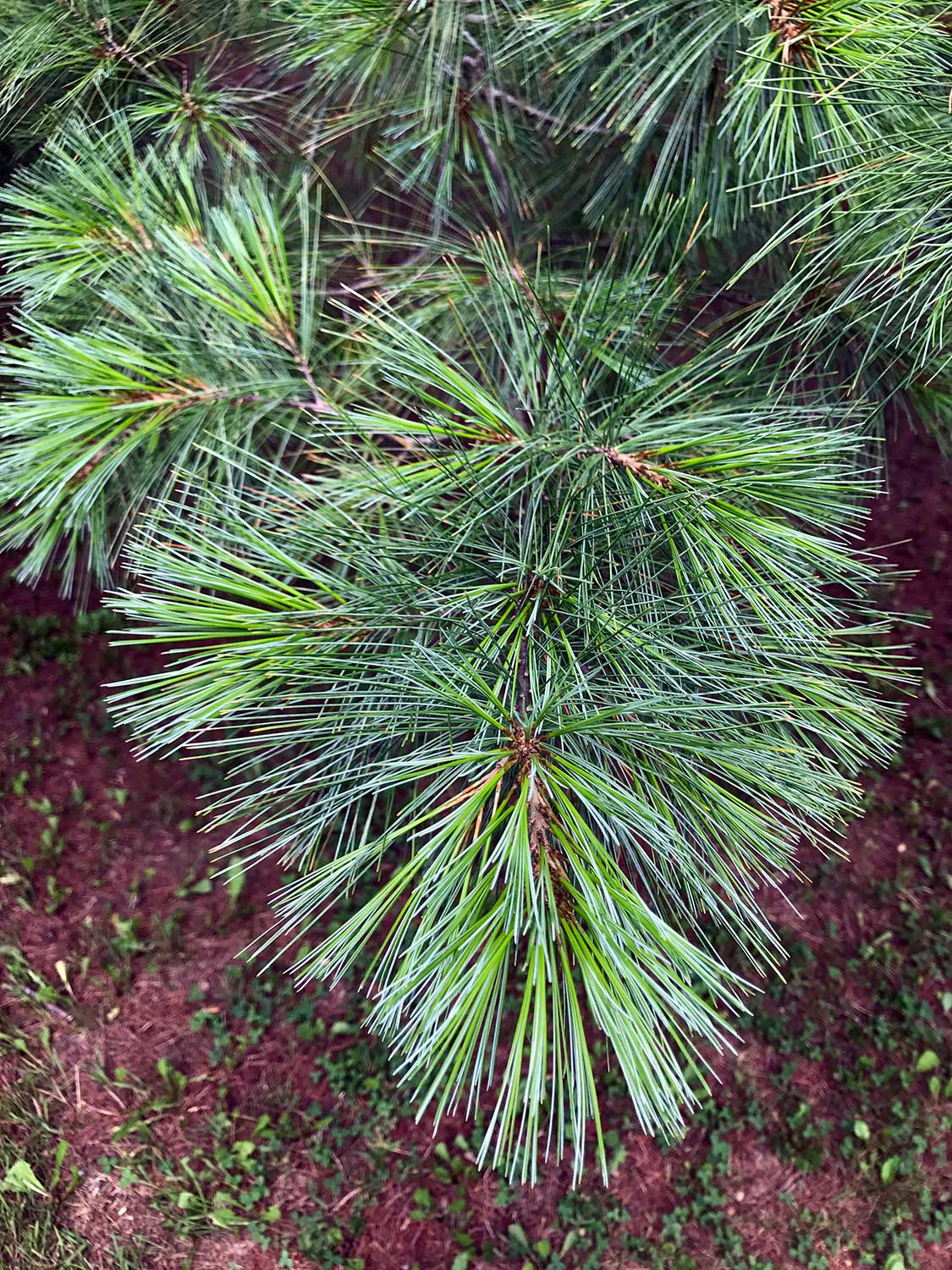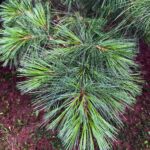Native To State: YES
Naturally Occurring: NO
Description
Pinus strobus (Eastern White Pine) is a large evergreen coniferous tree belonging to the Pinaceae family. Here are some key identification characteristics:
Size and Shape: Eastern white pine is a majestic tree that can reach heights of 80 to 150 feet (24 to 45 meters) or more. It has a tall, straight trunk and a broad, irregular crown with horizontally spreading branches.
Needles: The needles of Pinus strobus are soft, flexible, and occur in bundles of five. Each needle is slender, measuring about 2.5 to 5 inches (6 to 13 centimeters) long, and has a bluish-green to dark green color.
Cones: The tree produces elongated cones that are around 4 to 8 inches (10 to 20 centimeters) long. The cones have a cylindrical shape and are often slightly curved. When young, they are green, maturing to light brown when ripe.
Bark: The bark of young Eastern white pine trees is smooth and greenish-gray, gradually developing into a darker, reddish-brown or grayish-brown color with broad, flat-topped ridges as the tree ages.
Branches and Twigs: The branches are relatively slender, while the twigs are hairless and usually have a reddish-brown hue.
Habitat: Eastern white pine is native to eastern North America and can be found in a wide range of habitats, including mixed forests, upland areas, and well-drained soils. It prefers slightly acidic soils.
Cultivation: Eastern white pine is highly valued for its ornamental beauty and is planted in parks and large landscapes for its attractive form and soft, graceful appearance.
Other Species: Eastern white pine can be distinguished by its bundles of five needles, soft texture, and distinctive cones.
Eastern white pine has historical significance in North America, having played a vital role in early colonization and the timber industry. Today, it remains a treasured tree for its ecological value and aesthetic appeal.
Occurrence
Many planted in a 3 acre area in 1987 and 1988, but none survived. Some large specimens did survive in the farm yard. One planted in the north west corner is now a large tree. Several trees in have been planted around the property in the past decade and are still small and susceptible to deer predation.


